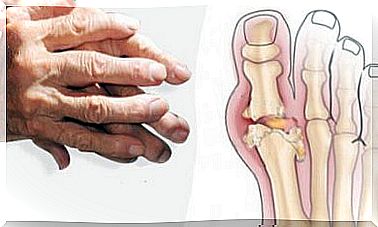Non-steroidal Anti-inflammatory Drugs (NSAIDs)

Non-steroidal anti-inflammatory drugs (NSAIDs) are known by the abbreviation NSAID. Due to their mechanism of action, these drugs have several uses. For example, they can relieve pain, reduce fever and inflammation, and have an antithrombotic effect.
Nonsteroidal anti-inflammatory drugs (NSAIDs) are one of the most prescribed drugs in the world. Because of their pain-relieving effect, doctors prescribe them for the treatment of rheumatic pain and inflammatory and degenerative diseases. In addition, they are prescribed for migraines, toothaches, and any inflammation.
They are very widely used, even in self-medication, as they are available from a pharmacy without a prescription. They thus have a potential risk of side effects.
It is important to note that no NSAID is better or safer than another. In this sense, such a drug should not be taken if you are taking any prescription drug, as the drugs may have a detrimental interaction.
Non-steroidal anti-inflammatory drugs (NSAIDs): mechanism of action

When NSAIDs are absorbed into the body and transported through the liver, they bind to a plasma protein called albumin.
This is important to keep in mind because if a patient has low albumin levels, the dose should be adjusted – otherwise there will be more protein in the bloodstream that does not bind to proteins and the effect will be greater.
The free drug component produces the effects of non-steroidal anti-inflammatory drugs. But how?
The mechanism of action of these drugs is by no means unique. They can make an impact in the following ways:
- By inhibiting the enzyme cyclooxygenase (COX). This is the main mechanism of action. Inhibition of this enzyme also inhibits the production of prostaglandins as mediators of inflammation.
- Non-prostaglandin-mediated effects, such as inhibition of neutrophils in inflammation or inhibition of proinflammatory mediators such as nitric oxide produced by cytokines.
- Apoptosis. Prostaglandins inhibit apoptosis, i.e. programmed cell death, and this could explain, at least in part, why certain NSAIDs are associated with a lower risk of some cancers.
Classification of nonsteroidal anti-inflammatory drugs
Nonsteroidal anti-inflammatory drugs (NSAIDs) can be classified according to whether or not they inhibit COX-2. Thus, there are both non-selective and COX-2-selective non-steroidal anti-inflammatory drugs.
Here are some nonsteroidal anti-inflammatory drugs that belong to the non-selective group:
- Salicylates. Acetylsalicylic acid or aspirin.
- Pyrazolones. Metamizole.
- Propionic acid derivatives. Ibuprofen.
- Acetic acid derivatives. Indomethacin.
- Oxicams. Piroxicam.
- Anthranilic acid. Meclofenamic acid.
Some COX-2-selective non-steroidal anti-inflammatory drugs, on the other hand, include meloxicam, nimesulide, etodolac, and coxibs such as celecoxib.
Non-steroidal anti-inflammatory drugs: pharmacokinetics
These drugs are quickly absorbed by the body. The main route of administration is oral, but they can also be administered topically, intravenously or rectally. Once absorbed, they reach maximum blood levels within two or three hours.
NSAIDs are recommended to be taken with food as they may damage the intestinal mucosa.
These drugs are highly bound to albumin plasma protein (approximately 95-99%). This is important because strong albumin binding can cause interactions with other drugs with the same trait.
These drugs are metabolized in the liver, and some of them have active metabolites. Almost all of them have some degree of enterohepatic circulation. Once metabolized, they are excreted by the kidneys. Therefore, special care should be taken in patients with hepatic impairment and the dose should be adjusted.
Side effects

All medications can cause side effects after just one dose. For this reason, it is important to understand the risks and benefits of the drug before taking it.
Nonsteroidal anti-inflammatory drugs (NSAIDs) cause side effects in the gastrointestinal tract. This can cause problems with the dosing of these drugs. In addition, they are nephrotoxic, meaning they can cause kidney problems.
Other common side effects of these medicines include:
- High blood pressure
- Heart problems
- Skin reactions
- Fluid swelling
It is important to ask your doctor before using any NSAID. Knowing its side effects and using it as instructed is the best way to achieve a successful treatment outcome.









